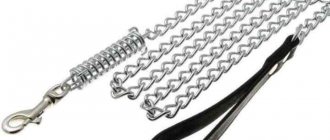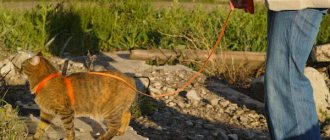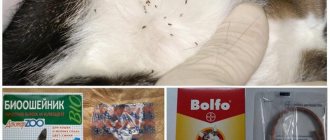A harness for cats is a very convenient device that is designed to accustom your beloved pet to walks. So if your furry pet is bored within the walls of a cramped apartment, it’s time to go outside. However, this is not as simple as it seems. For some cats, leaving the house is a real stress. In order not to injure your pet’s nervous system, you should accustom him to walks gradually. And you need to start by getting to know the ammunition. How to accustom a cat to a harness, how to make the right choice?
How to train a cat to wear a harness
Does a cat need to go for a walk?
There is an opinion that walking dogs is mandatory, but what about cats? Do they need to go outside from time to time?
Of course, it would be wrong to compare cats with dogs. Apart from the presence of four legs and a tail, animals have nothing else in common - neither character, nor habits, nor taste preferences. What about walks? Of course, if your cat has been sitting at home for several years, then it is likely that the prospect of going outside will not please her, even despite the fact that she spends all day on the windowsill and sighs languidly, watching the bird.
Preventing excess weight for spayed or neutered pets
Many veterinarians say that cats need to go outside to eat grass. It is known that it cleanses their stomach of unnecessary contents and allows them to normalize intestinal motility. In addition, green grass is a good source of vitamins and improves mood. Therefore, this is a strong argument in favor of walking.
Cat on a walk in a harness
He's not alone. Here's another. Everyone knows that every living creature on earth needs oxygen. A cat constantly sitting at home with the windows closed will obviously feel unwell. And this will manifest itself in weakness, reluctance to play and even eat. Therefore, owners who are against walking need to take utmost care to ensure that the pet receives enough oxygen. To do this, you need to regularly ventilate the room and open all the windows wide for half an hour at least several times a day. It's great if your apartment has a balcony. If you take the fluffy out on it at least several times a day, this will eliminate the need for walks.
Another important point: love for warmth. Surely, many owners have noticed that their pets are always near heat sources - a radiator, a stove. And some cats simply love to soak up the sun on the windowsill. And this is not because they need vitamin D, no, unlike humans, they can do just fine without it. They only need warmth, because without it, according to veterinarians, the cat may die.
Furry fidgets on the street may also like tempting rustling leaves, twigs moving quickly under the pressure of the wind, birds, butterflies, midges flying near their noses, and many other things that are attractive to cats.
Cat enjoying nature
However, everything is not so rosy. There are also several arguments that can convince cat owners to take them outside. This is a high probability of injury. This is often caused by motor vehicles. Despite the caution of cats, some of them, due to their timidity, still end up under wheels, receiving serious injuries. The same applies to meeting a dog, which, following its natural instincts, may unexpectedly attack a walking cat nearby.
Poisoning is another reason not to let your cat outside. Cats, by nature, are true hunters. Therefore, she will never refuse the opportunity to feast on a caught rat, mouse, bird or poisonous beetle. It is impossible to exclude the strange love of cats for garbage containers. Next to a tempting piece of meat there may be a chemical reagent that will penetrate the stomach and cause severe symptoms of intoxication in the form of nausea, vomiting, diarrhea and dehydration.
Cats are real hunters
No less dangerous are poisonous plants and exhaust gases, which also cause serious poisoning. All these troubles can be avoided if you accompany your cat on a walk, walk where it is clean, as quiet and safe as possible, and control his actions. And if you put a harness or leash on your pet, then she will definitely not be afraid of any danger.
Durable harness for walking
Negative aspects of street walking
However, there are also reasons why a cat being outside may be unsafe for its health and life:
- First of all, there is a high risk of injury, sudden collisions with stray dogs or moving vehicles. Despite the high caution of cats, some of them, as a result of increased timidity, fall under the wheels of cars.
- Constant risk of poisoning. By nature, cats are hunters. Therefore, if instinct is triggered, the pet can easily catch a sick rat or bird, or a poisonous beetle. Therefore, such actions of a pet should not be allowed.
- Another strange feature is his love for garbage containers. In addition to direct poisoning from spoiled foods, there may be remnants of powerful chemical reagents nearby, which, after penetrating the stomach, will provoke vomiting, diarrhea and other unpleasant consequences.
Taking into account the above facts, training should begin with short walks in safe areas. And only if there are signs of desire on the part of the pet, you can increase the time of walks and spend as much time outside as the owner’s capabilities allow.
Which cats should not be walked, and who needs it?
The fact that fresh air has never harmed anyone is obvious. The oxygen received during walks saturates the brain and improves the functioning of all internal organs. And there is no need to talk about the benefits of physical activity for domestic couch potatoes. To make your cat's walk as safe as possible, you should follow the following rules:
- the cat must have all vaccinations;
- you need to take preventive measures in advance to protect your pet from fleas, ticks, and lice;
- Buy a harness or leash.
Walking is strictly prohibited for such cats.
- Kittens up to 5 months old, who, for either physical or psychological reasons, cannot conquer the outside world. In addition, at this age, many vaccinations that are simply necessary for safe walks are contraindicated. It is necessary to organize an exit to the street only after all the necessary injections have been completed.
- Pregnant pets.
- Weakened, sick cats, or those who have recently suffered from an illness and are not yet strong enough.
- Pets are very shy and afraid of noise and bright light.
- Overly aggressive cats (especially during heat). When they see another animal, they will always want to fight with it. And you don’t need this at all. The best option in this case is to walk where there are no other animals.
- Cats over 5 years old who have not previously gone outside.
Walks will be useful for hyperactive and courageous cats. You will definitely like the diversity of the surrounding world. And they are unlikely to deny themselves the pleasure of repeating this wonderful moment after some time.
If your cat managed to escape through an open window to nibble grass, don’t scold her for it. It’s better to organize joint walks.
Cat eats grass
It will be useful to shake up pets who used to be hyperactive, but have recently become lazy and began to spend most of their time on the couch. Perhaps the lack of oxygen is to blame. Try going out into the fresh air with him. This will help the pet shake itself up and, perhaps, return it to its previous lifestyle.
If your cat has long hair and it’s a hot summer, then an evening walk on the cool, lush grass won’t hurt him. Your pet will feel much better.
Important! Any cat can be trained to walk. The ideal time for this is childhood.
Cat on a leash
Many owners of cats, especially expensive breeds, do not let their pets go freely for fear of their loss.
A great way to expand the scope of your cat's world is with a leash. Walking a cat on a leash has recently become increasingly popular among furry owners. The leash is also quite convenient when transporting a cat, for example to the veterinarian. Almost all cat breeds can learn to walk on a leash. However, there are several restrictions: it is prohibited to let a cat out for a walk without appropriate veterinary vaccinations; You should not walk with an aggressive or stressed animal; if the cat is feeding kittens or is in the last stages of pregnancy (a stressful situation during a walk can negatively affect the offspring and even the ability to feed kittens).
It is better to start training when the cat is younger, from about two to three months, and the owner must be extremely patient.
It is necessary to begin training a kitten indoors, in its usual environment. Put on a harness, let your pet get used to it, at this time it is better to engage in some kind of play with the kitten, encouraging it in every possible way with treats. The cat should have a strong association - a harness means play and treats. Put a harness on the kitten and be sure to reward it. After playing, the harness must be removed from the cat so that the pet does not get stuck anywhere and is not injured. After some time, when the kitten gets used to the harness, start using a leash in the training process. This is done like this: a leash is attached to the harness, pieces of your favorite treat are laid out in advance along the route (two to three steps). The cat is given freedom of action, do not put pressure on it under any circumstances. Step by step, your pet will begin to walk towards the food, pulling on the leash. Be patient. No one can get used to a leash the first time.
Adjust the harness to your pet's size. You should be able to fit two fingers under a properly adjusted harness with little difficulty.
When feeding, place the leash next to your cat's bowl, and leave it at her favorite sleeping place at night. Soon the cat will get used to its appearance and will clearly associate the leash and harness with pleasure and prosperity (in the cat’s understanding). Every time you put on a harness and leash, reward your cat with a treat and praise her. If the cat is irritated or overexcited, classes should be postponed, calm the pet, only after that you can begin training, otherwise, do not even try to conduct classes, much less scold the cat. In this case, you will not be able to achieve anything.
By nature, all cats are individualists; they really don’t like being controlled. The following technique will help you cope with this factor. You need to pick up the cat and put on a harness and leash. While holding her in your arms, continually praise and reassure your pet. Place a cat treat two steps away from you. Stand so that the cat can smell the food. Praise your cat quietly, gently place him on the floor towards the treat, with the leash slightly slack, and release the cat. The cat should head towards the food and eat it. Repeat this exercise regularly. Each time, if the cat reacts correctly, increase the time you hold the pet in your hands.
When the cat gets used to the leash and stops paying attention to it, increase the distance between the pieces of treats you place, and after two to three weeks, stop placing them around the house altogether, just encourage the cat when putting on the harness and when starting to move on the leash. Do your exercises regularly, don't be lazy.
At the next stage, before going outside in the apartment, practice this technique: give the cat a treat while she eats it, move a couple of steps forward, pulling the leash a little towards you, call your pet, the cat will run up to you and you will treat it with a treat again. Move around the apartment in this manner. Once your cat can easily walk on a leash around the house or apartment, exercises should be moved to fresh air.
Conduct the first classes alone, so that there is no one around you. At the beginning, give the cat freedom and follow where she goes, let her explore the world, especially if your cat has never been outside, even without a leash it will be a real shock for her. After some time, when the pet gets used to it, guide the cat’s movement with a leash, force it to move gently but surely in the direction you have chosen. Don’t forget about rewards; during your first walks, don’t skimp on treats and praise.
How to get a cat accustomed to a harness
Buying a harness and putting it on your cat is only half the battle. This design will not immediately make a positive impression on the pet, but on the contrary, it will alert him. Therefore, you should not immediately attach a harness to his neck and drag him outside, not paying attention to the fact that the cat is dragging along the floor, screaming at the top of his lungs, his eyes bulging, and does not understand why he is being punished.
The most important thing in this matter is gradualism. Start with training at home, and only then try to take your pet outside. The first thing to do is place the structure next to the cat. Let her sniff it properly and touch it (but don’t play!). The cat must make sure that the item is completely safe.
First step to harness
Only after this try to put the harness on the animal. Don't drag the cat, don't drag it around the room. Let him lie down, walk around, run and understand that the strap does not pose any danger. Don't forget to praise, pet your pet, or give him his favorite treat.
Attention! Keep an eye on the animal. He may want to get rid of the harness, or crawl into some gap, get caught and get hurt.
The next day, proceed with more drastic methods. Put on a leash and try walking around the room with your cat. Just don’t drag her, let her take the first step herself. This may take time. It’s okay, you can wait, the street won’t go anywhere, and you’ll still have time to show off your new harness with rhinestones and your beautiful cat.
If your pet refuses to go, don't insist. Place your favorite treat near his nose. Surely he will rush after the prey. If this does not help, pick up the cat, move him 30 cm forward and give him a treat. Repeat the action several times. Feed the animal each time (give it a small piece, otherwise the cat will become completely lazy). If this does not encourage the cat to “communicate” with the leash, try playing with it.
Training a cat to wear a harness at home
Make sure that the cat understands that this thing is the best and safest in the world. When you remove the leash, ignore the cat. Once it's on your pet's neck, do your best to show him how much you love him. Over time, the cat will begin to associate putting on a harness and leash with something very good and kind.
Keep training every day. When your pet can move freely on a leash and in straps around the apartment, it’s time to go outside. If this is not the first time for your pet, then there probably won’t be any difficulties. It’s worse if the cat experiences the outside world for the first time.
Remember! The cat is frightened not by the street itself, but by the noise that is happening around, the bright light, the new environment.
If the fluffy one completely refuses to show his face from the entrance door, don’t be angry. Otherwise, all your work will go down the drain.
Cat's reaction to a walk in a harness
Caress your pet, give it some food, pet it. There should be no screaming, tugging, or kicking. Allow the cat to stay in the entrance for a while with the door open. Let her get used to the current situation.
Then go outside and call your pet. If the cat does not respond to your pleasantries, pick him up and gently hold him close to you. Attempts must be repeated daily. The pet will still, even if it takes a while, get used to the street. Every time you arrive, treat your cat with his favorite treat. When your pet finally deigns to go outside, he may jump into the grass or bush. Don't pull him out, let him sit, look around, sniff everything.
Cat's alertness while walking
After exploring the area, the cat will leave and follow in the direction that is of greatest interest. Do not pull the harness in the other direction. Always follow the cat, encourage it and praise it. If your pet begins to feel uncomfortable or afraid, for example, if a dog appears in the distance, pick him up and move him to a safer place.
Attention! Walk your cat, increasing the walking time by 5-10 minutes every day. Expand your boundaries.
The cat will feel more confident if you put his favorite toy in the grass in which he basks. You can feed the animal. Cats always consider the eating area to be safe.
Video - Accustoming a cat to a harness
Video - How to train a cat to wear a harness?
How to train a cat to wear a flea collar
Today it’s easy to protect your pet from blood-sucking parasites without using chemicals. An effective method of prevention is flea collars. But you can’t spontaneously dress a cat in it. The feeling of a foreign object on the body can cause stress, and the specific smell from it can cause discomfort.
So the process of accustoming a cat to a collar should be carried out gradually, and some nuances should be taken into account. To make training go painlessly, follow the proven scheme:
- Place the collar on your cat for a few minutes every day;
- At first, hold her in your arms, or try to distract her with play;
- Increase the wearing of the accessory gradually - the cat must get used to it (sleeping, playing, eating - ideally, all this only in it);
- After putting on the collar, immediately give her a treat - then your pet will develop a positive connection between the accessory and something pleasant.
Accustom your pet to wearing a collar in familiar surroundings. If you go for a walk, take it off. For walks, use a harness with a leash. Then the cat will develop a perception of the collar not as a limiter of freedom.
Useful tips and tricks
To ensure your training is successful, follow these rules.
- Never leave your cat on a leash unattended. Any noise or rustle can scare away the animal, and it will climb a tree. Wearing a harness can cause suffocation and injury.
- Do not pull the leash or drag the cat. This will cause damage and will forever discourage your pet from interacting with this item.
- Unfortunately, there are some cats that will never accept being kept on a leash. As soon as the structure is put on the neck, they fall like a stone to the floor and do not want to get up under any pretext. It is very difficult to fight such animals, and sometimes even impossible.
- Keep an eye on the dogs. Some of them can rush at a cat and cause serious injury to it. Therefore, if you notice a dog staring in your direction, pick up your pet, turn away and move to another place.
- Sometimes the harness is not the right size for the cat. If this is so, then the pet will not agree to go for a walk under any pretext. A suitable harness will help solve the problem.
- Don't loosen your grip on the leash. This will reduce the likelihood of the animal escaping.
- Carry a cloth bag or pillowcase with you so you can hide your cat from your dog.
Cat's reaction to a dog
A harness will help protect your cat from dangers such as poisoning, injury, or falling under the wheels of cars. Therefore, such a device should be in every home where there is a walking cat.
How to choose a harness for a cat
If you definitely decide to go for a walk with your cat and accustom her to a leash, then the first thing you need to do is take care of choosing the right design.
Remember! Veterinarians do not recommend walking a furry pet wearing a collar. These structures can injure the animal’s delicate neck. With the help of a harness, the load on the spine is distributed evenly. In addition, the cat is unlikely to break out of this convenient device, but it can calmly escape from the collar, especially if it is very frightened.
The design should not fit the animal’s body too tightly. Place two fingers under the loop. Do they fit in? Perfect! With these parameters, the animal will not feel discomfort and will be able to swallow saliva freely. Therefore, before purchasing ammunition, take care of the necessary measurements - neck and chest circumference. Show them at the pet store and choose a harness that is suitable for your pet.
Perfectly shrunken harness
Many harnesses sold are adjustable, allowing you to adjust the size. Accordingly, the prices for such devices will be higher.
Important! When the animal is in a harness, try not to scold it. Otherwise, she will associate the object with fear and discomfort.
The material used in manufacturing is also important. You should also pay attention to this nuance when purchasing a harness. Typically, for kittens, the design is made from soft and elastic materials that stretch well. These are not suitable for adult cats - only made from nylon and other denser materials.
In addition to the harness, you should definitely purchase a leash. In this case, its length matters. If your pet is shy and always stays close to you, then preference should be given to short, fixed-length leashes.
For more active, inquisitive and hyperactive pets, roulette leashes or stretchable accordion leashes are suitable. The prohibition against purchasing such devices is the small size of the cat. They are not able to pull a long leash with full strength.
Roulette leash
It is important to consider the quality of the harness material. Even with the slightest electrification, a cat may feel discomfort and refuse to walk in a harness forever.
Leash “Stretchable accordion”
When choosing a design, you should focus on the quality of the parts. For the convenience of the cat, it is better not to purchase products that are connected with glue or rivets. A good quality harness should be stitched. Then the risk that the pet will run away is very small. The fasteners should snap well and not come apart when the leash is pulled.
Practical advice
Problems you may encounter.
- The cat does not master the harness stage, licks the fur under it, and fusses. Most likely, a clean animal is simply concerned about the condition of its coat, so while mastering this stage, brush your pet regularly.
- The animal is actively trying to get rid of the ammunition with the help of its teeth and paws. The problem may be that its size is chosen incorrectly, the harness rubs and presses, and interferes with natural movements. Remember that 2 fingers should comfortably fit under the collar and harness at any angle.
- The pet is scared. It is possible that the equipment (harness, leash, collar) contains sharp fittings, bells or other irritating factors.
- Wild panic when going outside, the animal tries to hide and even begins to scratch the owner when he tries to lower him to the ground. In this case, walking is out of the question. Perhaps your pet’s “ultimate dream” is a windowsill where you can safely study flying birds and insects.
We suggest you read: How to care for an unusual axolotl?
Cats are very smart animals, so it is not difficult to accustom even an adult to a leash and takes at most 1-2 months. It is important to show patience and affection towards your pet at every stage.
how to train a cat to use the litter box
Types of harnesses
Essentially, a harness is a structure that consists of several straps that cover the cat’s torso in the area of the shoulder blades. It is usually fastened on the back of the cat. This counters the stress placed on the animal's neck. The leash is attached to a ring attached to the harness.
The variety of harnesses for cats is huge. They can be different in size, shape, method of fastening, made of different materials, etc.
Table 1. Types of harnesses for cats.
| Name | What is | pros |
| Figure-of-eight harness | Made in the form of two loops attached behind the front legs and on the neck | Does not allow the cat to break free and escape. The pet can move calmly. His movements are not constrained |
| V-harness | Similar to the previous design. The difference is that on the chest area the straps are attached in the form of the letter V | The cat won't be able to escape. The design does not put any strain on the animal's neck. Does not hinder movement |
| H-shaped harness | The design is also similar to the previous ones. It differs in the shape of the loop. It is represented in the form of the letter H | The pet will not run away from the owner. There is no pressure on the pet's neck. The animal can move freely |
| Vest | Presented in the form of a jacket, which is worn on the front of the animal’s body. The fastening can be with Velcro or buttons | Will not allow the animal to escape from the owner. Protects the cat from pollution. In addition, it provides her with warmth in winter. Does not squeeze your pet's neck. Movements are carried out calmly |
Important! Veterinarians recommend purchasing a harness that consists of straps.
The fabric of the harness should not be rough or hard. It is better to choose an elastic material that can stretch. Nylon or cotton is ideal for this. Such harnesses do not cause discomfort to the cat. It is better not to purchase a device made of leather. It is quite hard and heavy, which can be painful and unpleasant for the pet. Width also matters. The belts should be more or less wide. Ideal parameters are 1-1.5 cm.
Putting a harness on a cat - basic rules
The first and foremost rule for putting something on a cat is its comfort. Your idea of attaching a foreign object to your pet is good only if it does not stress the animal, does not risk receiving mental or physical injury, or injuring you.
Important: nervous shocks always result in changes in behavior patterns, aggression and/or various diseases. Protect your ward from severe anxiety, it will be better for both him and you.
So before you try to outfit your cat for going outside, ask yourself three questions:
- Does Murzik accept the harness normally?
- Is he in a good mood?
- is he in the mood for a walk?
Only if you have “collected” three yes, you can start preparing your pet for the exit. If at least one of the options is in doubt, you should postpone the promenade.
Who said “walk”?
We must not forget that animals do not particularly favor extraneous trinkets on their bodies. And they are unlikely to wait meekly while you put all the straps in place. Therefore, before trying to pull the structure onto an animal, practice on a soft toy. This way you will avoid many unpleasant moments, including hissing, aggression, traumatic attempts to escape and frontal attacks if you are not sensitive enough.
Note: to create brief instructions on how to put a walking harness on a cat, we relied on the photographs from our article. The equipment you purchase may vary slightly.
How to put on a figure-eight harness
The process of putting on this elementary design is as simple as 2x2:
- Unfasten the clasp on the harness;
- We thread the cat's head through a small loop (without a buckle);
- We place the intersection of the straps with the leash ring between the shoulder blades;
- We fasten the ends of the large loop under the animal’s belly;
- Your ward can go for a walk!
Go for a walk in this instrument of torture yourself, master!
How to put on a Y-harness
There is little difference here from the previous version. The only difference is that you need to remember to position the front paw correctly:
- Unfasten the fastener on the chest belt;
- We pass the cat's paw into the space between the loops and the chest strap;
- We put a small loop (without a buckle) around her neck;
- We place the intersection of the straps with the leash ring between the shoulder blades, and the chest strap in the middle of the chest;
- We fasten the “tail” of the large loop, clasping the animal with a belt across the chest;
- Ready!
I'll sleep until you buy proper harness
V-harness - step-by-step instructions
With this option, everything is also extremely simple:
- Unfasten the carabiner above the shoulder blades;
- We place the cat's front paws in the “sleeves” on both sides of the chest strap;
- Fasten the harness;
- Go ahead, great things await you!
But it’s better not to wear it!
Putting an H-shaped harness on a cat
A popular model does not always mean easy use. Many avid cat lovers admit that it sometimes takes them a while to recreate the H-shaped pattern for putting the H-shaped pattern on their cats:
- Unfasten the fastex(s);
- We adjust the chest belt into place (in our diagram - part E);
- Place the chest and back straps parallel to each other;
- If there is only one fastener, thread the front paw into the corresponding “sleeve”;
- Fasten the fastex(s);
- Your pet is dressed in the safest type of harness and is ready to conquer the world!
Why “ready”? I've been conquering it for a long time!
How to wear a harness with a solid back or chest
Putting on this type of equipment is somewhat similar to putting on dolls: you simply thread your pet’s paws into the “sleeves” and secure the harness. Everyone's busy!
Remember: when putting on a harness for the first time, you need to adjust all the straps to your pet, so as not to waste time, nerves and effort on this later.
Why does a cat absolutely not want to come into contact with a harness?
Pets, even after long training, do not always agree to contact the harness. Perhaps during the training process you did something wrong - you treated the cat roughly when putting it on, or you shouted at the animal when it categorically refused to put its paw into the hole, or you pulled the leash too hard, not allowing your pet to move freely around the apartment. All these actions can forever discourage your pet from not only going for a walk, but even looking at the hated harness.
Cats do not always agree to be in contact with a harness.
What else can provoke a cat’s reluctance to wear it?
- As you know, cats, by nature, are true clean people. They spend all day licking their fur until it shines. When something interferes with this, the animal begins to fuss and get nervous. So is the case with the harness. In addition, the cat may be worried about the condition of its coat.
- If the cat, after putting on the harness, begins to actively bite it and tries to remove the structure with its hind paws, it may be due to the wrong size. Maybe the straps are constricting her body, rubbing her, restricting her movements. As already mentioned, the distance between the strap and the body of the animal should be 2 cm.
- A cat may refuse to wear a harness because it is frightened. If there are various bells, decorations and other “things” that irritate the animal, then it is unlikely that he will want to put on the ammunition next time.
Attention! If every time you go outside, your pet meows as loud as he can, does not want to leave your hands, and when you try to put him on the ground, he climbs over you like a tree, then, unfortunately, your pet is not made for walking. It's best to leave this idea. Surely, your cat is a real homebody and a window sill is the ultimate dream.
Cat's reaction to a walk
Is it worth taking your pet for a walk in an urban environment?
Many people don’t know how to train a cat to go for walks, or whether it’s even possible. If you have decided to walk your domestic cat, you should not immediately run to the store for a harness and leash.
First you need to clarify whether you can walk your pet. So, for example, if a cat lives in a large apartment or a private house, and its owners give it high-quality food and care for the pet’s fur and nails, then there is no need for walks, because the animal gets everything it needs at home.
Do not forget that most cats are extremely curious and after a few walks they may begin to show interest in the “outside world”. They will try at every opportunity to try to slip out of “imprisonment” and explore new territories longer. It also happens that a domestic cat loves walks so much that he asks to go outside.
It is worth accustoming your pet to walks from a young age, but not earlier than five months. For example, taking him out slowly on hot summer days to save the pet from overheating. This should be done in the evening, when it is already a little cooler outside. You can accustom your cat to walks in the country.
Walking domestic cats is especially recommended for animals with increased activity; for them this will be a great opportunity to release their energy. A summer cottage is truly the most ideal place to accustom a cat to the street.
In general, the answer to the question “is it possible to walk a cat?” directly depends on the character of the pet. Sometimes it happens that the cat asks to go for a walk on its own. However, we should not forget that some cats are not recommended to go outside. In order for an animal to be safely taken for a walk, it must have the following qualities:
- A neutered cat can go for a walk; cats must be sterilized before doing so. By the way, it is advisable to castrate a cat without the intention of taking him for walks, since an uncastrated animal can crap in the apartment. If a cat begins to shit, it is necessary to take him for castration. A castrated cat will behave more calmly.
- Adult animals that have received the necessary set of vaccinations.
- Regardless of gender, a pet that does not show aggression can walk outside.
INTERESTING TO KNOW: Proper care of a Persian cat
You should not take pets who have recently suffered a serious illness for a walk. It is also not recommended to walk overly timid animals that the owners have not been able to tame, as this can lead to disastrous consequences.
Where should you walk so as not to scare the cat?
It is preferable to start from a balcony or loggia. At first, hold the cat in your arms and show him all the delights of nature from above. Let him get used to the sounds of cars, the barking of dogs, the chirping of birds. This is a very useful activity. When you go outside for the first time, these sounds will no longer seem unfamiliar to the kitty.
Cat on the balcony
What are the best places to go for a walk?
- The walk should be carried out as far as possible from highways and roads with loudly roaring cars. It is unlikely that in such an environment the cat will want to walk and enjoy nature. Silence is the key to a good walk. And the exhaust gases emanating from vehicles are harmful to the health of the pet (and the owner too).
- It is preferable to walk in places where there are no dogs. A huge barking dog can greatly frighten a cat, and there is no need to talk about the possibility of an attack. So be careful. If you see a dog nearby, it is better to quickly pick up the cat, turn away and go to another place.
- No need to walk near trash cans. Despite the fact that the cat will be wearing a harness, this cannot always 100% protect him from the opportunity to grab a tasty morsel lying next to the trash heap.
- Areas with tall trees should also be on the list of places where cats should not be walked. A frightened pet can escape and climb high, high. And no amount of treats, toys, or kind words will pull him away from there.
The cat climbed a tree
Teaching a cat to walk on a leash
On average, it takes up to 1 month to train even the most stubborn adult animals to wear a harness.
Now attach a leash carabiner to the harness and immediately distract the animal - pick it up and play, treat it with a treat, comb its fur. After a couple of days, take your pet to another room, connect the leash and go to the kitchen. Pour food there and call the cat. The natural desire to feed will overcome the discomfort, and your pet will come running, dragging the leash.
The next stage is getting used to walking outside. Put the animal on a leash and make sure that it shows its own desire to explore the world around it - walk on the ground, smell or eat grass, etc. At first, you can hold your palms near the pet so that it feels protected.
We suggest you read: Why does a cat go to the toilet with blood? Treatment and reasons.
After the first steps, begin to show the behavior that was at home: if you choose the right route, a treat. Communicate with the cat in a soft voice, praise, stroke, and pick up periodically. As a rule, it takes up to 1 week to master street walking.
how to train a cat to be held
Since cats have weakly developed neck muscles, it is better to use a harness rather than a collar when attaching a leash. Otherwise, any awkward movement of the owner can lead to damage to the purr's fragile neck.
When choosing a harness, you should give preference to products made of cotton or nylon, and purchase a leash at least two meters long. After the purchase, it is necessary to “introduce” the animal to the new devices, allowing him to carefully sniff and “feel” both objects. If desired, the pussy can even play with them, thereby transmitting its own scent to the products.
Popular harness models
The market offers quite a lot of models of harnesses for cats. Having studied the offers of some online stores and analyzed the quality characteristics of various products, we offer our rating of cat harnesses.
Table 2. Comparative characteristics of cat harness models.
| Name | Characteristics | Dimensions | Advantages | Flaws |
| Model from TRIXIE | Harness with stripes that reflect light. The set includes a leash, which is attached to the harness with a durable metal carabiner | Strap width – 1 cm. Chest circumference – 22×42 cm |
| Flashing stripes can frighten an animal |
| Model from ReflectoCat S Rogz | Made from polyester. The set includes a leash, the length of which is 1 m 80 cm. The fasteners are made of acetate plastic. They are very strong. When opened, the animal's fur does not come off and is not damaged. The carabiner connecting the leash to the harness opens with significant tension. This allows you to unfasten it when the animal climbs a high fence and tree. The product is bright, beautiful, the set includes bells | Strap width – 1.1 cm. Size – S |
|
|
| Model from DEZZIE, created for kittens | Nylon based material. The set includes a leash 1 meter 20 cm long | The width of the straps is 0.8 cm. The chest circumference is 21x34 cm. |
| |
| Model Hunter Smart from Strips | Made from nylon. The kit includes a leash 120 cm long. The dimensions are adjusted using plastic sliders on the slots | Strap width – 0.8 cm. Chest circumference – 22×46 cm, neck circumference – 22×33 cm |
| Narrow straps |
| Trixie model for kittens and small cats | Made of artificial leather. The set includes a leash 1.2 m long | Strap width 0.8 cm. Bust circumference – 22×32 cm, neck circumference – 22×28 cm |
| You will have to buy a new harness when the animal grows up |
The basic rule for walking furry pets is that the cat is not the owner. The cat must walk the owner. Therefore, do not pull the leash or drag the animal in the opposite direction. If this place is dangerous, just pick him up and take him to another place. You should not prohibit your pet from exploring the territory.











